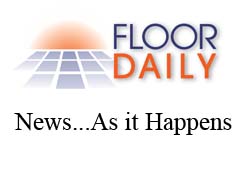USGBC Begins Pilot Test of New Rating System
Washington, DC, February 12, 2007--The U.S. Green Building Council (USGBC) is now accepting applications for pilot projects to participate in the LEED for Neighborhood Development program. This new rating system integrates the principles of smart growth, urbanism, and green building into the first national standard for neighborhood design.“The future of green building is to think beyond just buildings, by addressing important issues like density development, community infrastructure, resource availability, and encouraging a healthy lifestyle,” said Rick Fedrizzi, President, CEO & Founding Chair, U.S. Green Building Council. “LEED for Neighborhood Development is an important and exciting step towards transforming the marketplace to create a healthy and sustainable future.”
Interested projects can apply to join the pilot until April 6, 2007. Application information is available from the USGBC Web site, www.usgbc.org/leed/nd. The pilot test neighborhoods will be the first neighborhood development projects to earn the distinction of LEED certification while also helping to refine the new LEED rating system. The pilot phase of the program will conclude in early 2008. Based on feedback gathered during the pilot, the rating system will be revised as necessary prior to being balloted by USGBC's membership.
The LEED for Neighborhood Development rating system is a collaboration between USGBC, the Congress for the New Urbanism (CNU), and the Natural Resources Defense Council (NRDC).
"Smart growth is about innovation triumphing over our community development challenges," said Kaid Benfield, Director of Smart Growth, Natural Resources Defense Council. "This new program supports developers who are eager and willing to innovate, and levels the playing field for everyone."
Just as other LEED systems have improved building efficiency and energy performance, LEED for neighborhoods will reward efficient use of land and the building of complete and walkable communities," says John Norquist, President and CEO of the Congress for the New Urbanism. "It is helping to reinforce a more complete understanding of sustainability that extends all the way from the individual building to the neighborhood and community."
The program emphasizes the design and construction elements that knit buildings together into a neighborhood, and provides guidelines for better location, design, and construction of new residential, commercial, and mixed use development.
Specifically, the pilot program for neighborhood development evaluates projects in four areas:
